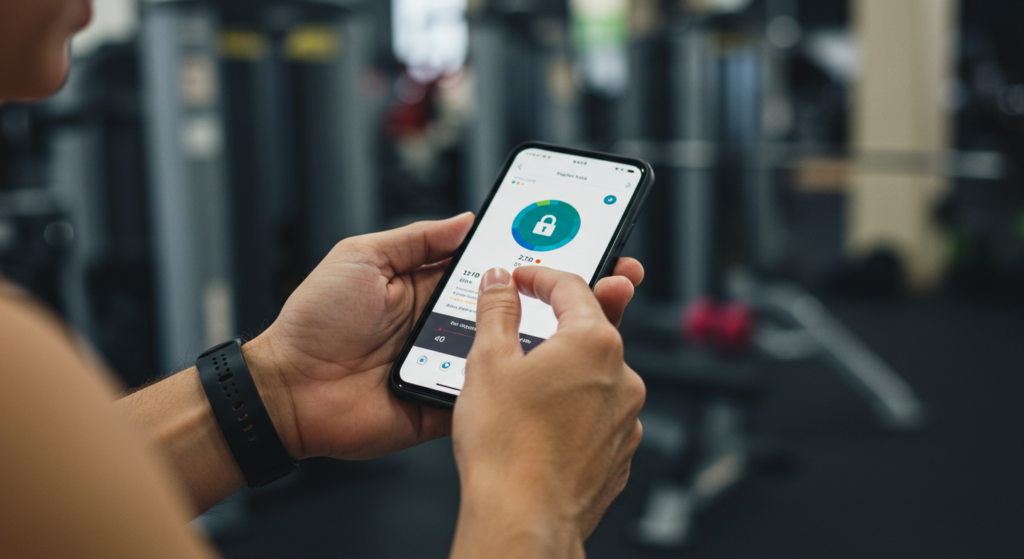Fit and Private: How to Keep Your Fitness Data from Going Public
Fitness trackers and smartwatches have become essential tools for tracking workouts, monitoring heart rate, and improving overall health. While these devices offer great benefits, they also collect vast amounts of personal data. This data—ranging from biometric readings to location tracking—is often shared with third parties, sometimes without users fully realizing it.

As companies like Apple, Fitbit, Garmin, and WHOOP continue refining their technology, the question of who owns your fitness data has become more important than ever. Fitness tracking should improve your well-being, not compromise your privacy. Understanding the risks and knowing how to secure your data is essential for anyone using wearable fitness technology.
How Fitness Devices and Apps Collect Your Data
The Types of Data Wearables Track
Modern wearable devices have evolved beyond simple step counters to sophisticated tools that monitor a wide array of personal metrics. These devices collect data on heart rate, sleep patterns, and even stress levels, providing users with detailed insights into their health and fitness. Additionally, many wearables are equipped with GPS functionality, tracking users’ precise locations during activities like running or cycling.
However, the collection of such sensitive information raises significant privacy concerns. According to CyberGhost (CG) research, the extensive data gathered by sports gadgets can be vulnerable to unauthorized access and misuse. Users often remain unaware of how their data is stored, shared, or potentially sold to third parties. This lack of transparency highlights the importance of understanding the types of data our wearables collect and taking proactive measures to protect our personal information.
How Your Data is Shared and Processed
The way fitness data is used depends on the company’s policies. Some brands encrypt and protect your information, while others share it with third parties. Many apps sell anonymized user data for research or marketing purposes. While companies claim this information is used to improve fitness technology, it also means your personal habits, routines, and health data could be monetized without your direct consent.
Artificial intelligence plays a growing role in fitness tracking. Many devices analyze biometric trends to suggest workout improvements, but this also means companies retain detailed records of your fitness history. In some cases, this data can be accessed by law enforcement, insurance providers, or employers looking to evaluate personal health trends.
Privacy Risks: What Could Go Wrong?
The Threat of Data Breaches and Hacking
Fitness tracking data is valuable, making wearables a target for cybercriminals. Several high-profile breaches have exposed millions of users’ fitness data. In 2018, Under Armour’s MyFitnessPal app suffered a breach affecting 150 million users, while Strava’s location data leak in 2021 revealed sensitive information about U.S. military bases.
If hackers access your fitness data, they can learn where you live, your workout routines, and even when you are away from home. This information could be used for identity theft, blackmail, or targeted advertising that feels uncomfortably precise.
How Companies Monetize Your Health Data
Many fitness apps and wearables share user data with advertisers, corporate wellness programs, and health insurers. Some health insurance providers now offer premium discounts based on fitness tracking metrics, but this also means your personal activity levels could be used to adjust rates or deny coverage.
While companies often claim to anonymize data before sharing it, multiple studies have shown that anonymized fitness data can still be traced back to individuals using location tracking and behavioral patterns.
Legal and Ethical Concerns with Fitness Data
The legal landscape surrounding fitness data is evolving. GDPR in Europe and CCPA in California have set stricter privacy regulations, but many fitness companies still operate in legal gray areas.
Fitness tracker data has already been used as evidence in criminal cases, divorce proceedings, and insurance claims. If you don’t control your privacy settings, your own fitness records could be used against you in unexpected ways.
How to Protect Your Fitness Data from Going Public
Adjusting Privacy Settings on Your Fitness Tracker

One of the easiest ways to secure your data is by reviewing and adjusting the privacy settings on your fitness device and apps. Many wearables allow users to disable GPS tracking, automatic data syncing, and third-party app integrations. Taking the time to configure these settings ensures that your personal information isn’t being shared unnecessarily.
| Setting | Why It Matters | How to Adjust It |
| GPS Tracking | Prevents location-based tracking of your runs and workouts | Disable GPS when not using outdoor workout modes |
| Data Syncing | Stops automatic uploads to cloud storage and third-party apps | Adjust app settings to limit cloud backups |
| Third-Party Access | Prevents advertisers and partners from collecting your fitness data | Revoke permissions for unnecessary app integrations |
Strengthening Security Measures on Wearable Devices
Beyond adjusting settings, strengthening security measures helps keep your data safe. Many users reuse passwords across multiple apps, making them vulnerable to hacking. Setting strong, unique passwords for fitness accounts and enabling two-factor authentication reduces the risk of unauthorized access.
Regularly updating your device’s software is equally important. Many wearables receive firmware updates that fix security vulnerabilities, yet users often ignore these updates. Ensuring your device is always running the latest version prevents known exploits from being used against you.
Choosing a Privacy-Focused Fitness Tracker
Not all fitness trackers handle data the same way. Some brands prioritize user privacy with strong encryption and strict data-sharing policies, while others are known for selling user information to third parties.
| Brand | Privacy Features | Data Sharing Policy |
| Apple Watch | End-to-end encryption, no third-party selling | Minimal data sharing, user-controlled permissions |
| Fitbit (Google) | Cloud-based storage with optional settings | Shares anonymized data with research and advertisers |
| Garmin | Offline storage, device encryption | Syncs with multiple platforms, but doesn’t sell user data |
| WHOOP | Encrypted data storage, subscription-based | No direct advertising, but limited transparency on data policies |
If privacy is a top concern, choosing a device with strong security measures and clear data policies is essential.
The Future of Fitness Tech & Data Privacy
Stronger Encryption and Consumer Demand for Privacy
As concerns over fitness data privacy grow, companies are implementing stronger encryption and security measures. Apple, for example, has introduced on-device encryption for health data, preventing unauthorized access. Other brands are experimenting with blockchain technology, which offers decentralized and tamper-proof data storage solutions.
Regulations and the Role of Government in Data Protection
Governments are stepping in with stricter regulations, forcing tech companies to be more transparent about data usage. The GDPR and CCPA require companies to disclose how they collect and use fitness data, giving consumers more control. Future regulations may include mandatory opt-in data sharing, ensuring users explicitly agree before their data is used for commercial purposes.
Conclusion
Fitness tracking should be about improving health, not exposing personal data to unnecessary risks. Taking control of privacy settings, strengthening security measures, and choosing devices with better encryption ensures that your fitness journey remains private.
Consumers must demand stronger protections from tech companies, ensuring that privacy is a fundamental feature rather than an afterthought. As fitness wearables continue to evolve, maintaining control over who has access to your health data will be more important than ever.
Frequently Asked Questions (FAQs)
Yes, fitness data is a target for cybercriminals. Using strong passwords, enabling two-factor authentication, and keeping devices updated helps prevent unauthorized access.
Apple Watch is widely regarded as one of the most privacy-focused fitness trackers due to its encryption and strict data-sharing policies.
Most platforms offer data deletion options in account settings, but some require manual requests to remove stored data from company servers. Checking the privacy policy of your device ensures complete data removal.
